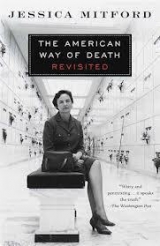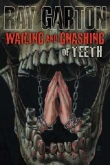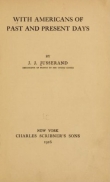
Текст книги "The American Way of Death Revisited"
Автор книги: Jessica Mitford
сообщить о нарушении
Текущая страница: 14 (всего у книги 23 страниц)
14. THE NOSY CLERGY
“To the avaricious churchman there must be provided proof that a funeral investment does not deprive either the church or its pastor of revenue.” This extraordinary statement appeared in the National Funeral Service Journalfor April 1961, together with the opinion that the three most important reasons for the mounting rash of criticism of funeral service are “religion, avarice, and a burning desire for social reform.”
The same idea is expressed a little more fully in another issue of the same magazine: “The minister is perhaps our most serious problem, but the one most easily solved. Most religious leaders avoid interference. There are some, however… who feel that they must protect their parishioners’ financial resources and direct them to a more ‘worthy’ cause. Some of these men, after finding more dimes than dollars in the collection plate, reach the point of frustration where they vent their unholy anger on the supposedly affluent funeral director.”
These are salvos fired in a rather one-sided battle which rages from time to time between some of the clergy and some sections of the funeral industry—one-sided because, while the funeral men are always ready with dukes up to go on the offensive, the average minister is generally unaware that war has been declared.
The issue boils down to this: The morticians resent the intrusion into their business of clergy who take it upon themselves to steer parishioners in the direction of moderation in choice of casket and other matters pertaining to the production of the funeral. Many of the clergy, for their part, deplore what they regard as the growing usurpation of their role as counselors in a time of grief and need, and the growing distortion of what they view as an extremely important, solemn religious rite.
Not infrequently, the controversy spills over into print. There is a considerable body of church literature on the subject: pamphlets, booklets, and ecclesiastical-magazine articles which explain the religious significance of the funeral as an expression of faith. These stress the importance of ministerial counsel at the time of death, the spiritual nature of the funeral service, the need to face realistically the facts of life and death, the advisability of giving some thought to the type of funeral desired before the need arises.
Sometimes the advice is taken a step further: “Consider the cost in the context of your stewardship. Thoughts of preservation of a body, coupled with the inflationary pressures of our time, have led some people to excessive expenditures for burial vaults and caskets. Yet, we know that the body shall return to the elements from which it came…. This means that we will be conservative in the purchase of casket, burial, and additional services, conserving frequently limited funds to meet the needs of the living. Let us recognize that ordinarily this would also be the desire of the deceased….”
From the funeral director’s point of view, these are fighting words; bad enough on paper, but when followed up by the corporeal presence of a clergyman with the family at the crucial moment of the selection of a casket, they constitute a call to arms. “The man who has the clergyman making the selection for his families does have a nasty problem,” wrote an undertaker.
The posing of this nasty problem in the pages of Mortuary Managementproduced some very down-to-earth advice, best relayed by quoting from the correspondence of the funeral directors who participated in the discussion:
There is one possible solution to the problem of ministers accompanying families to the casket display room in an attempt to persuade them to purchase a minimum funeral service…. The funeral director should do a little “pre-selling.” …Then take the family into the showroom, introduce them to a few caskets, showing them the price card, and say that you realize that the selection of a funeral service is a very intimate and personal thing which the family alone can do and that you want them to be able to do this without the influence of others. At this time, invite the minister to join you in your officewhile the family discusses the selection. [19]19
Italics in the original.
[Закрыть]
The scheme of separating the minister from the selecting group by “invit[ing him] to join you in your office” is discussed more explicitly by the next writer:
We tell the family to go ahead and look over the caskets in the display room and that the minister, if he has come with them, will join them later. We tell the minister that we have something we would like to talk to him about privately, and we’ve found that if we have some questions to ask him, he seems to be flattered that his advice is being sought, and we can keep him in the private office until the family has actually made its selection.
Just in case the point has not been thoroughly clarified, a third writer describes in further detail how best to lure the unsuspecting man of God from the side of his parishioners:
Ministers seem to be getting into the act more and more, and, in general, becoming more and more inimical to us…. We make a point of emphasizing, during our pre-selection period, the idea that making the selection is something that only the family can do…. We emphasize this very strongly, particularly if there is a minister around. Also, we make it a point to think up something to talk about, if the minister comes with the family… such as the new addition to the church property, their parking problem, the local Boys’ Club in which they are interested, their golf game, politics (a red-hot subject in this part of the country right now!) or anything else that will keep them occupied and happy while the family goes ahead with the selection.
A fourth writer throws in the sponge:
We have this same problem of nosy clergymen in our town, and I am convinced that there is nothing that can be done about the situation. We tried!
Compared with these views, those expressed by most clergy themselves are moderate and even tolerant. Their occasional criticism is mild and reserved. Some of the clergymen with whom I discussed the matter confessed to having been sorely tried from time to time in their dealings with the funeral people. Most of them—including the most outspoken foes of high-priced, showy funerals—made a sharp differentiation between the funeral price-gouger and the “honest, ethical mortician.” Others felt that the funeral director is in a sense the prisoner of his own wall-to-wall carpeting; that, having installed all the expensive gadgetry and luxurious fittings, he is obliged to charge high prices in order to pay for the upkeep of his fancy establishment.
I sought to learn from a number of churchmen of different faiths something of ecclesiastic attitudes towards the funeral service. What are the actual ritualistic requirements; what is the status of the dead body; what is the position on “viewing the remains,” on the willing of the body for medical research? How closely does the sort of funeral generally provided today conform with the traditions of the church? What, if any, criticisms are there of today’s typical funeral service? Should the clergyman participate with the family in making the actual arrangements for the funeral—should he go with them into the selection room? These were some of the questions I had.
The Right Reverend James A. Pike, bishop of the Episcopal Diocese of California at the time, came out foursquare in favor of the “nosy” clergy. He urged that the pastor be called in first—that is, before the funeral director is consulted—when death occurs. The clergyman should accompany the family to the funeral parlor for the specific purpose of helping them to resist the pressures towards overspending. In any event, the casket, whether pine box or magnificent solid bronze, is, in the Episcopal Church, covered with a funeral pall during the service—“the point being to minimize the showpiece aspects. We feel that earthly remains are not to be made that much of.” Although the clergy strongly favor moderation in funeral expense and simplicity of decor, individual freedom in the choice of a coffin is respected: “If people insist on doing something foolish in the matter of funeral expense, that’s up to them, of course. What’s sometimes wrong is the element of pride, apparently fostered in the advertising approach of some funeral directors. In terms of a remedy, a lot of teaching in advance is needed—the use and purpose of the funeral pall, and why it is our position that the casket should be closed during the service.”
What about the practice of displaying the body in a slumber room at the mortuary before the funeral? “This might bring some comfort and peace to the relatives; one can see that the widow might wish a final glance at the deceased. This is a private affair, up to the family to decide.” While Bishop Pike was neutral on the matter of the “open casket” beforehand, he was definitely opposed to it during and after the service. “This is not merely my personal view,” he said. “Our tradition does not favor the ‘viewing of the remains’ after the service by those who have come. In other words, when the casket is closed after the preliminary period, it remains closed.”
Theologically, Bishop Pike explained, the body has served its sacramental purpose, that of housing the personality of the individual, “which in life to come receives a new, appropriate means of expression and relationship.” The remains are not the person; they are rather like discarded clothing. Nevertheless, as the outward and visible sign of personality, they are to be treated with respect and reverence. In the same way, the presence of the casket at the funeral service has a symbolic function, much like that of a flag in a parade. There is no objection to cremation; on the contrary, most Protestant clergy think it a very good idea. The memorial service, at which the coffin is not present, is also quite permissible, and this practice is, in fact, on the increase.
Is there any contradiction between the reverent treatment of human remains and the bequeathing of those remains to medical schools for research purposes? “No, a positive, constructive use of the body for medical research is by no means irreverent. It is in fact a noble and fine thing for a person to make such provision in his will. We believe in the Resurrection and the continuous personal life of the individual spirit, not of the earthly remains.”
Speaking of the use of flowers at funerals, Bishop Pike explained that while people are free to have flowers sent, this is not encouraged. More and more frequently, donations to charity in memory of the deceased are in order. “When many flowers are in fact sent, in many churches they are placed in the narthex or in the transept—except for flowers in the two vases at the altar.”
Lastly, Bishop Pike emphasized that the proper place for a religious funeral service is in church—and notin the “chapel” of a mortuary. Protestant ministers will officiate at the funerals of non-church members if asked to do so. Most churches make no charge whatsoever; some churches in the East do make a small charge to those who are not contributing members, “but it’s chicken feed compared to the overall cost of the funeral.” The family may want to make a small payment to the verger (“That’s up to them”), and the organist generally makes a charge.
In all of this, there is cold comfort indeed for the funeral director, who is most anxious to put his entire range of goods and services fully at the disposal of the mourners. For, to what avail the art of the embalmer if his handiwork is to be concealed in a closed coffin? Of what use is the “copper casket of SEAMLESS construction, made without joints or seams of any kind,” if its seamlessness and freedom from joints are hidden beneath a funeral pall? What is to become of the “chapel” with its rheostat-controlled lighting, deep-piled wall-to-wall carpeting, cushioned pews, soft, cold color scheme, and Pilcher organ if funeral services are to be conducted in—of all things—a church? And, if the family so desires, with no casket present at all? Lastly, if the minister will be counseling and comforting the bereaved family, what is then left of the funeral director’s “professional” role of grief therapist?
Many of the views expressed by Bishop Pike were echoed by a Jewish religious leader, Rabbi Sidney Akselrad of Temple Beth El in Berkeley, California: “In Jewish practice, simplicity is the rule. There’s no need to go into debt over a funeral. The Jewish tradition emphasizes a very simple coffin.” He spoke with approval of a Jewish custom in pre-Hitler Germany; simple, identical coffins were stored up for rich and poor alike “that there might be no competition in death.” Rabbi Akselrad advised: “Ask the cost; don’t be embarrassed to put the question to them.” But he found that people on the whole do not like to go through this kind of survey.
Although the Jewish faith requires the presence of the coffin during the funeral service, Rabbi Akselrad did not approve of the open-casket ceremony: “I don’t like the display. It’s not very Jewish. I don’t like the parade to view the handiwork of the funeral director, especially after the service, which should attempt in some small way to bridge the gulf between life and death; the viewing of the remains tends to reopen the wound.” However, like Bishop Pike, the rabbi felt that in some cases the immediate family might derive comfort from looking on the face of the dead.
Of slumber-room visiting, he thought this was something of a social experience, where people gather for a reunion—“So glad to see you” said all around—but “sometimes the deceased is overlooked.”
Rabbi Akselrad related one embarrassing experience in which a widow begged him to accompany her to the funeral establishment to help negotiate the price of the funeral. The funeral director quoted one price as the least expensive funeral he offered. The rabbi demurred, saying that he had told the woman she could purchase one for less, upon which the funeral director quickly relented. Since that time, Rabbi Akselrad has been loath to get involved in the financial end of the funeral.
Not so Reverend Laurance Cross, pastor of the Berkeley Community Church. As one who has officiated at more than six thousand funerals, Reverend Cross was a veteran in dealing with undertakers of every kind.
He placed great emphasis on the importance of distinguishing between the fair-minded, ethical undertaker with a conscience and those who use “psychological pressure” to force up the price of a service. “You can’t damn them all,” he said. “It’s not true to portray them as all of a kind.” He told of several in his own community—“decent, sincere people who pursue their work according to the highest ideals.” Many of these would like to see far-reaching changes in the approach and practices of the industry; one almost suffered a nervous breakdown because of the sharp business dealings of his partner. “Unfortunately, though, of the two kinds of undertaker, the expensive kind dominates,” Reverend Cross said.
In relating one of his selection-room skirmishes, he took on aspects of an avenging angel with an Alabama accent—for he hailed originally from that state. The selection-room arrangement described by Reverend Cross had none of the subtleties of the Triangle Plan or the Keystone Approach. “First you come to a magnificent casket—it’s like a pink show window. You’d think it was the Queen’s jewels on display. The inside is made of beautiful satin, and it’s set out on a thick white carpet. You walk along and come to the next one. That’s another beauty, maybe in a different pastel shade. You see a few more, and then you come to the absolute end. There aren’t any more. Those you have seen are priced very high. At this point, most people say, ‘Well, that’s more than I can afford, but he doesn’t have any others—I guess I’ll have to settle for one of these.’ However, if the customer is mean enough to say, ‘I haven’t got that much. We’ll have to take the body elsewhere,’ then the funeral director opens a door you never knew existed.”
Shifting angrily in his chair, Reverend Cross warmed to his theme. “You go into another room where there are maybe half a dozen caskets—in less attractive colors than the other beauties—and at somewhat lower prices. That’s where psychology comes in. The average person who has managed to avoid the more expensive caskets now feels that at least he has saved several hundred dollars. But if you’re as mean as the devil, you may still insist that the caskets you’ve seen are more than you were prepared to pay. So you go through the same procedure. The funeral director opens yet another dooryou never knew existed, and here are some for even less. If you are so mean that you still won’t spend that much, you are led into the last room. The funeral director pulls down a thing that looks like an ironing board, and shows you an ugly casket, maybe purple in color. The cheap ones are purposely made up in hideous colors, and they have no handles, no lining. If you still won’t buy that, you are taken from there through a concrete alleyway as dark as Egypt. You come to a garage where all the funeral cars are parked. There he pulls out a box. It’s just six pieces of redwood nailed together.”
“How much does he charge for that one?”
“He’ll charge anything he can get out of you for it,” said Reverend Cross, giving that avenging-angel look.
Those in the funeral trade who had looked upon the mild and occasional interventions of the clergy as yet another “menace” have more recently been confronted by a threat of honest-to-God authenticity. It has cropped up in various parts of the country, and has been led, unexpectedly, by Catholic clerics, who have come out foursquare to denounce not the occasional undertaker but the business as a whole.
One such is Father James Connolly, pastor of St. Blaise Church in Bellingham Center, Massachusetts. In a broadside attack on funeral directors published in the National Catholic Reporter(August 1995), Father Connolly called into question the legitimacy of the funeral director’s participation in Catholic funerals.
Defining the Church’s view of the funeral Mass as a celebration of the believing community in which members should be active participants in the rituals of death, he expressed deep concern over the extent to which mortuary personnel seek to supplant the role of the parishioners.
In a statement deplored by Mortuary Managementas “bold,” Father Connolly went on to say:
Funeral directors have greater power over the bereaved who put themselves in their hands. It is so sad to see this power turn into manipulation. Attempts to undermine what we are doing, it seems, involve more than the individual funeral director on duty. It seems that Americans have been rendered powerless by the funeral industry. Bright, independent people permit themselves to be moved as if they were mechanical.
They are led to their automobiles, from their automobiles, to the church, down the aisle to their seat and to the open grave as if they wouldn’t otherwise see it.
The parish decided the time had come to take matters in hand. “We announced to them that they would no longer lead the entrance procession at funerals in our church. We meet them at the front door and the community receives the body and returns it after Mass to the funeral directors at the front door,” said Father Connolly. He goes on to describe the shocked and incredulous reaction of the mortuary brethren:
Among all the uncertainties of life there is one constant. Funeral directors smile, exude friendliness, purr compassion and have great respect for the priest. I never thought of these sweet folks as anything but gentle and deferential. Then I saw them transfigured before me…. Something akin to guerrilla war broke out in our church…. The funeral industry is big business. Maybe they own the parish church and nobody told us.
Mortuary Managementsoon had reason to bewail an even more egregious instance of clerical meddlesomeness. The setting is Phoenix, Arizona, where a parish priest has likewise barred mortuary personnel from the church, asserting that “there is no need for delivery men unaccustomed to Catholic liturgy and not members of the family or the parish to insert themselves into our sacred liturgy and procession when they are not needed and are not requested to do so by the priest.” The latter voice is unmistakably that of Father Henry Wasielewski.
Fifteen years ago, outraged by the high cost of dying, Father Henry felt called upon to do something about it. Aware that the key to any solution lay in consumer education and in penetrating the highly secret wholesale price of coffins, he organized the Interfaith Funeral Information Committee (IFIC), an ecumenical task force consisting of local clergy, social workers, and community leaders to study the industry. Starting modestly, the committee opened an information hot line. Two telephone lines were installed, one for taped messages in Spanish and one in English. Callers were given the names of five funeral homes which offered complete funerals for $650. Surveys by the committee disclosed that some mortuaries in the area were charging as much as $1,800 for the identical product.
Since those early days, Father Henry, with extraordinary dedication and energy, has gone on-line, extending his information network to a nationwide audience.
An example of the facts and figures he offers includes a mind-bogglingly exhaustive price survey of 120 funeral homes in the Houston, Texas, area. To establish a basis for comparison, he uses the following guidelines:
• a retail casket price of $428 to $600—metal, with a choice of three colors—(the wholesale cost is $285; a markup of 50 percent to 100 percent is reasonable, he says)
• a reasonable service charge for a “traditional” funeral—$800 to $1,400
• a reasonable price range for a complete funeral including metal casket, choice of colors, embalming, and viewing—$1,450 to $2,500.
Father Henry has found sixteen mortuaries in the area that will provide a complete funeral for the recommended maximum sum of $2,500 or less, and lists them in his report. Also listed are three casket retailers that will deliver a designated casket to the mortuary as priced above.
There follow price lists for the next hundred Houston-area establishments, whose charges for the same products and services run from $3,000 to $9,910. The casket markup for some of these is more than five times the wholesale cost.
The establishments in the highest bracket—$7,000 to $9,910 for the same services and commodities—are:
| Forest Park Westheimer | $7,020 |
| Waltrip Funeral Directors | $7,133 |
| Settegast-Kopf | $7,161 |
| Memorial Oaks | $7,595 |
| Forest Park Lawndale | $8,309 |
| Settegast-Kopf-Kirby | $8,420 |
| George Lewis Funeral Directors | $9,910 |
These are of interest because all seven are owned by the giant conglomerate Service Corporation International (SCI). Robert Waltrip is founder and chairman of the board of SCI.
Close on the heels of SCI is the Loewen Group, second-largest corporate consolidator in North America, represented by five Houston-area mortuaries, all quoting a uniform minimum price of $5,990.
Although the major consolidators have in the past shown a preference for high-end sales and have invested money to better attract high-end consumers by improving the appearance of the physical plant, it should by no means be assumed that the low-end public is being neglected. Low-end mortuaries are being acquired, in some cases to close them down and thereby reduce competition, more often to gouge low-end consumers. That the poor pay more is a truism that has not been disregarded by the conglomerates. Our investigator has ascertained that in a Denver mortuary fronting for SCI, a gray-cloth-covered coffin, the likes of which would create consternation if found befouling the premises of one of their high-end establishments, was being retailed to its customers for $1,995. The standard wholesale cost of this box is $140. SCI’s cost is even lower because of its volume discounts.
Also included in this survey are the names of twenty mortuaries in the area that will provide direct cremations for less than $700, cremation container and crematory fee included. The funeral homes owned by SCI and Loewen quote prices of $2,745 to $3,985 for the identical service. For more information, Father Henry’s Web site is: www.xroads.com/~funerals.
No one, not even fellow members of the ministry, has escaped the righteous wrath of this avenging angel who has chosen as his special target malfeasance in the funeral industry. The IFIC also uncovered what it regards as a pattern of mortuary manipulation of the clergy. According to the panel, some clergymen have relationships with morticians that entail receiving gratuities or inflated stipends for funeral services. The committee’s findings were the subject of a feature story in the Arizona Republic, which reported a pattern of offers—gifts to clergymen of country club memberships, trips on mortuary airplanes, and tickets to sporting events.
In Montana, one mortician makes it a practice to buy a side of beef at the 4-H fair and put it in a freezer for the local minister. Another keeps an RV available—for the local preacher to use for his vacation, and yet another provides the pastor with a “beeper.”
Then, of course, there’s the ubiquitous and somewhat more subtle calendar. Mortuaries supply churches with these for distribution to parishioners. The calendars prominently display the name of the funeral home, which is frequently thanked from the pulpit for its contribution.
In yet another instance, Green Acres Mortuary donated several kegs of helpful beer for a picnic at Our Lady of Perpetual Help Catholic Church in Scottsdale. When asked about this, the pastor said that such donations do make him uncomfortable. There is no question but that such a donation is a form of advertising, he said. “We want to receive the gifts, but at the same time I don’t want to bite the hand that gives it.” The mortuary’s spokesman saw things very much the same way. “Donations from mortuaries are a legitimate business practice to solicit recommendations,” he is reported as saying. “Am I out there hustling business? You’re damn right I am…. You always hope you will get recommended when you make a donation. That’s why you do it. You expect your associations and friendships with priests and ministers will bring you some business.”




![Книга Make Winning a Habit [с таблицами] автора Rick Page](http://itexts.net/files/books/110/no-cover.jpg)



